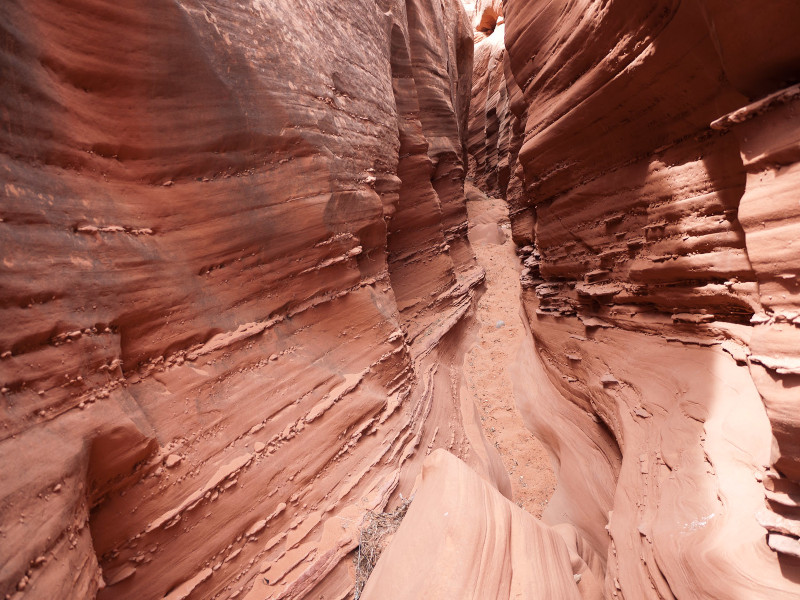Spooky Gulch Facts
- The aptly-named feature known as Spooky Gulch forms a short, narrow slot canyon located in a rather isolated section of the country that it formed in.
- While truly visually stunning, it nonetheless remains by many to be considered a rather dark and often mysterious location through which to trek.
- Yet, perhaps for that very reason, it also continues to remain extremely popular with tourists.
- Also, if one is in excellent shape, the entire length can be traversed in about 20 minutes. However, taking photos will require much more time, given its incredible beauty.
Related Articles
Spooky Gulch Physical Description
The astonishing marvel known as Spooky Gulch measures roughly 1.2 miles (1.9 km) in length and also averages 30 feet (10 m) in depth.
This appropriately named gulch remains, however, extremely narrow. Consequently, the gulch rarely measures more than 15 inches (0.5 m) wide.
In fact, its name derives from the fact that due to its narrowness and overhanging ledges very little light reaches the floor of the gulch.
This, therefore, leaves the floor of the slot canyon in a perpetual twilight during the day. Additionally, the entire length of the location consists of twists and bends, with any of these often angling more than 180 degrees.
In addition, only a few places in the canyon exist where one can one see more than 10 feet (3 m) ahead exist in the entire canyon.
Spooky Gulch Location and Nature
The sincerely astonishing Spooky Gulch formed in what now constitutes the state of Utah, in the United States, in North America.
This marvel of Nature originally formed through the geological process of erosion. The walls of the canyon consist entirely of sandstone. The walls also remain famous for their knobby formations.
The floor of the gulch principally consists of stone, yet sand deposits occasionally drift in and settle in places. The opening of the Gulch formed rather wide, yet within 200 ft (61 m) of the entrance, it funnels into its narrow straits.
During the rainy season, shallow pools of water often accumulate within Spooky Gulch. The unique colored layers are a consequence of the formation of the native Navajo sandstone.
Features Sharing Its Region
Check out our other articles on 10 Extraordinary Reptiles, Maned Wolf, Victoria Falls, Jack Jumper Ant, Black Witches’ Butter, Spiny Butterfly Ray, Great Potoo, Axolotl, Jamaican Iguana

